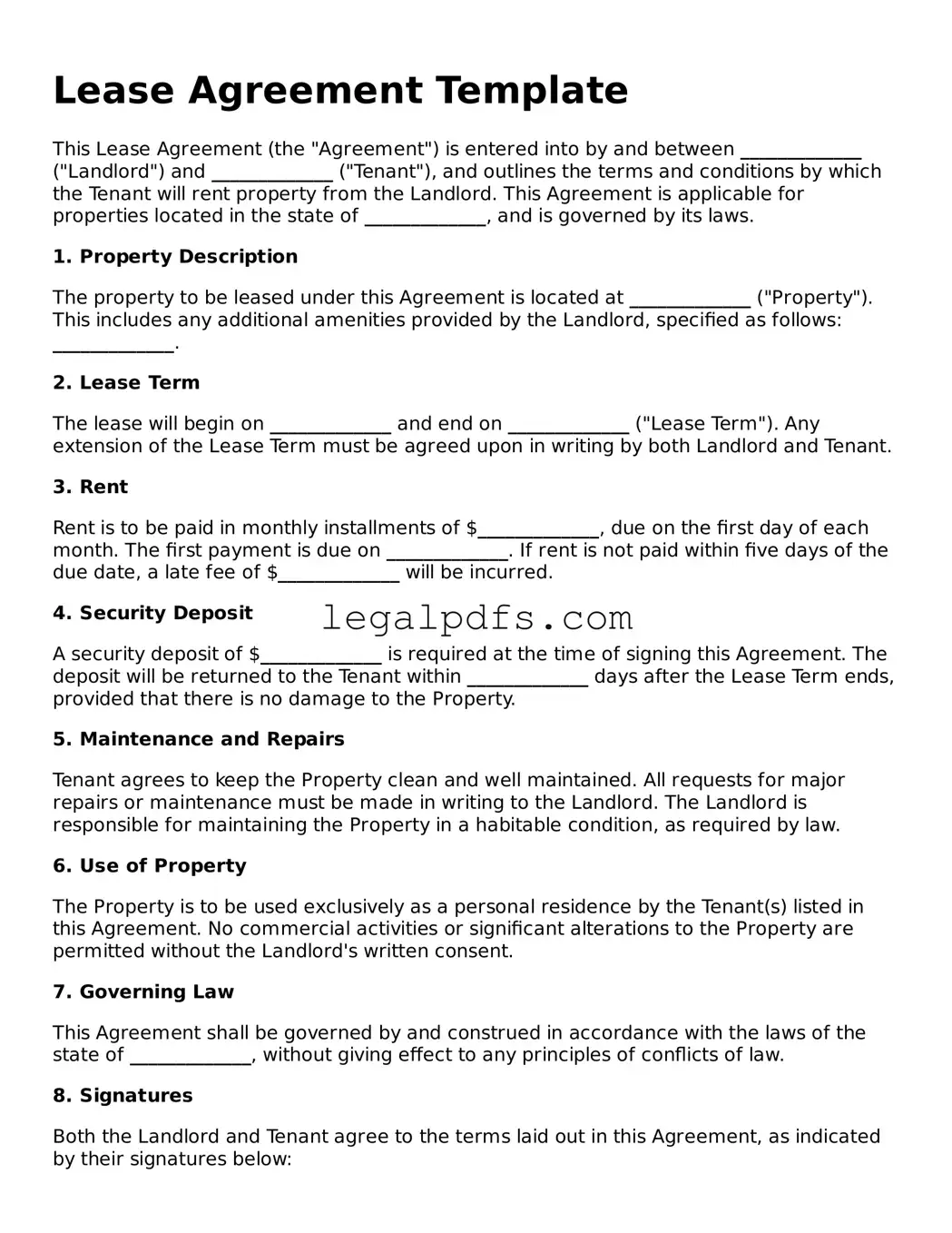Lease Agreement Template
This Lease Agreement (the "Agreement") is entered into by and between _____________ ("Landlord") and _____________ ("Tenant"), and outlines the terms and conditions by which the Tenant will rent property from the Landlord. This Agreement is applicable for properties located in the state of _____________, and is governed by its laws.
1. Property Description
The property to be leased under this Agreement is located at _____________ ("Property"). This includes any additional amenities provided by the Landlord, specified as follows: _____________.
2. Lease Term
The lease will begin on _____________ and end on _____________ ("Lease Term"). Any extension of the Lease Term must be agreed upon in writing by both Landlord and Tenant.
3. Rent
Rent is to be paid in monthly installments of $_____________, due on the first day of each month. The first payment is due on _____________. If rent is not paid within five days of the due date, a late fee of $_____________ will be incurred.
4. Security Deposit
A security deposit of $_____________ is required at the time of signing this Agreement. The deposit will be returned to the Tenant within _____________ days after the Lease Term ends, provided that there is no damage to the Property.
5. Maintenance and Repairs
Tenant agrees to keep the Property clean and well maintained. All requests for major repairs or maintenance must be made in writing to the Landlord. The Landlord is responsible for maintaining the Property in a habitable condition, as required by law.
6. Use of Property
The Property is to be used exclusively as a personal residence by the Tenant(s) listed in this Agreement. No commercial activities or significant alterations to the Property are permitted without the Landlord's written consent.
7. Governing Law
This Agreement shall be governed by and construed in accordance with the laws of the state of _____________, without giving effect to any principles of conflicts of law.
8. Signatures
Both the Landlord and Tenant agree to the terms laid out in this Agreement, as indicated by their signatures below:
Landlord's Signature: _____________________ Date: _______________
Tenant's Signature: _____________________ Date: _______________
This document is intended to create a legally binding Lease Agreement. Both parties are encouraged to read the entire document carefully and to seek legal advice if necessary before signing.
